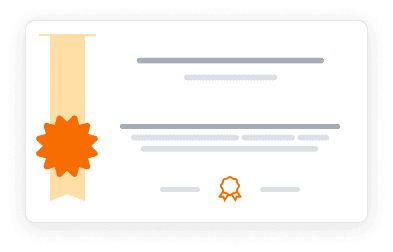This course is part of SAS Statistical Business Analyst Professional Certificate.
This intermediate course focuses on developing predictive models using logistic regression in SAS/STAT software, with particular emphasis on the LOGISTIC procedure. Students learn a comprehensive approach to building effective classification models for predicting binary outcomes. The curriculum covers the entire modeling workflow, beginning with fundamental concepts of predictive modeling and understanding the logistic regression framework. Students learn to handle common data challenges including missing values, categorical predictors with many levels, redundant variables, and nonlinear relationships. The course teaches advanced techniques such as smoothed weight-of-evidence coding, variable clustering to reduce redundancy, and various methods for variable selection including stepwise selection and best-subsets approaches. Students also learn how to detect and incorporate interactions between variables. The course places significant emphasis on model assessment, covering ROC curves, confusion matrices, profit-based performance measures, and methods for comparing multiple models. Throughout the course, students work with real business scenarios such as target marketing for a bank, providing hands-on experience with practical applications of logistic regression.
4.7
(60 ratings)
7,887 already enrolled
Instructors:
English
Қазақша, Deutsch, हिन्दी, 17 more
What you'll learn
Apply logistic regression to model binary outcomes in business scenarios
Handle missing values through imputation techniques with appropriate indicators
Transform categorical variables using methods like collapsing and weight-of-evidence coding
Reduce redundancy among predictors using variable clustering methods
Identify and address nonlinear relationships between predictors and response
Select optimal variables and interactions using stepwise and best-subsets selection
Skills you'll gain
This course includes:
5.5 Hours PreRecorded video
40 assignments
Access on Mobile, Desktop, Tablet
FullTime access
Shareable certificate
Closed caption
Top companies offer this course to their employees
Top companies provide this course to enhance their employees' skills, ensuring they excel in handling complex projects and drive organizational success.





There are 7 modules in this course
This comprehensive course teaches predictive modeling with logistic regression using SAS software. It begins with fundamentals of predictive modeling, exploring business scenarios and analytical challenges. Students then learn the concepts of logistic regression, including odds ratios, maximum likelihood estimation, and scoring new cases. The course dedicates significant attention to preparing input variables, covering techniques for handling missing values, dealing with categorical predictors, reducing redundancy through variable clustering, and addressing nonlinear relationships. Advanced variable selection methods are taught, including stepwise selection, backward elimination, and best-subsets selection, along with techniques for detecting and modeling interactions. The final sections focus on model performance assessment using various metrics such as ROC curves, confusion matrices, and profit-based measures. Throughout the course, students work with practical business scenarios, learning both the theoretical foundations and the hands-on implementation using SAS procedures.
Course Overview and Logistics
Module 1 · 1 Hours to complete
Understanding Predictive Modeling
Module 2 · 1 Hours to complete
Fitting the Model
Module 3 · 2 Hours to complete
Preparing the Input Variables, Part 1
Module 4 · 3 Hours to complete
Preparing the Input Variables, Part 2
Module 5 · 4 Hours to complete
Measuring Model Performance
Module 6 · 2 Hours to complete
SAS Certification Practice Exam - Statistical Business Analysis Using SAS®9: Regression and Modeling
Module 7 · 1 Hours to complete
Fee Structure
Individual course purchase is not available - to enroll in this course with a certificate, you need to purchase the complete Professional Certificate Course. For enrollment and detailed fee structure, visit the following: SAS Statistical Business Analyst Professional Certificate
Instructor
Biostatistics Expert and Analytics Education Specialist
Marc Huber serves as Senior Analytical Training Consultant at SAS Institute, bringing extensive experience in biostatistics and quantitative psychology. His academic credentials include BA and MA degrees in Quantitative Psychology and an MSW from the University of North Carolina at Chapel Hill. With 14 years of experience as a health researcher in biostatistics and epidemiology at Duke University Medical Center and UNC-Chapel Hill, he brings deep expertise in healthcare analytics. Since joining SAS as an instructor in 2004, he has developed expertise in predictive modeling and forecasting systems. Through his Coursera courses "Building a Large-Scale, Automated Forecasting System" and "Predictive Modeling with Logistic Regression using SAS," he helps professionals master advanced analytical techniques. His teaching approach combines theoretical rigor with practical applications, drawing from his extensive experience in healthcare research and statistical analysis.
Testimonials
Testimonials and success stories are a testament to the quality of this program and its impact on your career and learning journey. Be the first to help others make an informed decision by sharing your review of the course.
Frequently asked questions
Below are some of the most commonly asked questions about this course. We aim to provide clear and concise answers to help you better understand the course content, structure, and any other relevant information. If you have any additional questions or if your question is not listed here, please don't hesitate to reach out to our support team for further assistance.




